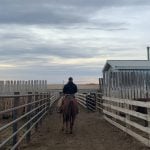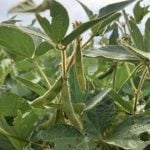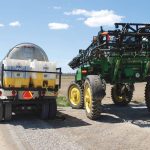One theme keeps emerging when Garth Patterson reflects on his 40 years in the agriculture business.
“The energy has always kept me motivated.”
Patterson is retiring at the end of 2022 after spending the last 11 years as executive director of the Western Grains Research Foundation (WGRF).
Before that he was executive director of Saskatchewan Pulse Growers for 16 years and a regional soil conservationist at the Saskatchewan Soil Conservation Association for five years.
He started working at the SSCA in 1990 at a time when farmers were searching for new crops to grow, direct seeding was starting to take off and glyphosate prices had dropped below $10 per litre.
Read Also

Malting barley exporters target Mexican market
Canada’s barley sector is setting its sights on the Mexican market to help mop up some of the lost demand from China
“It was a really exciting time for me early in my career,” said Patterson.
“We were getting field days with 500 farmers showing up to look at direct seeding. It was a complete system change and it started in Saskatchewan.”
Pulse acres began to take off during that time and that launched Patterson into the second major phase of his career at SPG.
Crop prices for many of the mainstream field crops were depressed and farmers were desperate for alternatives.
“It was a real high energy time of discovery and exploration,” he said.
Patterson recalled when 1,700 farmers showed up to Pulse Days one year to learn about growing peas and lentils.
“We were scrambling to get TV monitors set up in the lobby at the Saskatoon Inn,” he said.
There wasn’t enough space in the meeting room to accommodate everyone. Farmers were lined up in the hallways.
“It was probably good the fire marshal didn’t pay us a visit that day,” Patterson said with a laugh.
He has fond memories of jumping in a van with Crop Development Centre breeders Bert Vandenberg and Al Slinkard and traversing remote Saskatchewan highways in January and February to attend winter extension meetings.
When he joined the WGRF in 2011 it was an equally exciting time.
“It was a wonderful opportunity,” said Patterson.
“It was an organization with a lot of assets ready to grow and do more.”
WGRF chair Keith Degenhardt was on the search committee that hired Patterson.
“We were actually sort of surprised that Garth applied,” he said.
But he is glad he did. They thought they might get five years out of Patterson but it was more than double that because it turned out to be a great fit.
“He is a real team leader and team builder,” said Degenhardt.
The organization has evolved under Patterson’s leadership.
“We are now the largest funder of agriculture research here in Western Canada cutting across the majority of the crops out there,” he said.
He credits Patterson with breaking down provincial barriers when it comes to funding agricultural research projects.
Patterson was able to build a collaboration among WGRF members and with organizations outside of the WGRF fold. He also formed stronger ties with universities.
He is proud of the team he has built at the WGRF and feels he is leaving the organization in good hands.
“Things are really firing on all cylinders there right now,” he said.
There has been a big change in the scope of crops being funded, the amount of money being invested and the number of partnerships with other organizations.
Research funding has recently fallen to $12.5 million per year from the pre-COVID average of $14 million as projects had to be deferred due to the pandemic. But he is confident that will rebound.
In addition to the annual research funding, $34 million has been committed to hire research chairs and buy equipment and infrastructure at various research institutions.
Degenhardt said the new executive director of the WGRF will need to be a team builder with good communication skills and have a passion for agriculture research.
“We need a newer, younger version of Garth Patterson,” he said.
“That in itself is a compliment to Garth.”
Patterson and his wife will be relocating from Saskatoon to a new home they are building in Nelson, B.C., to be closer to family.
He plans to stay involved in the agriculture sector, doing something in the management/leadership area, albeit at a slower pace that allows for more family time.
“I’m still really energized by the people in agriculture and I think I can still offer some things,” he said.















